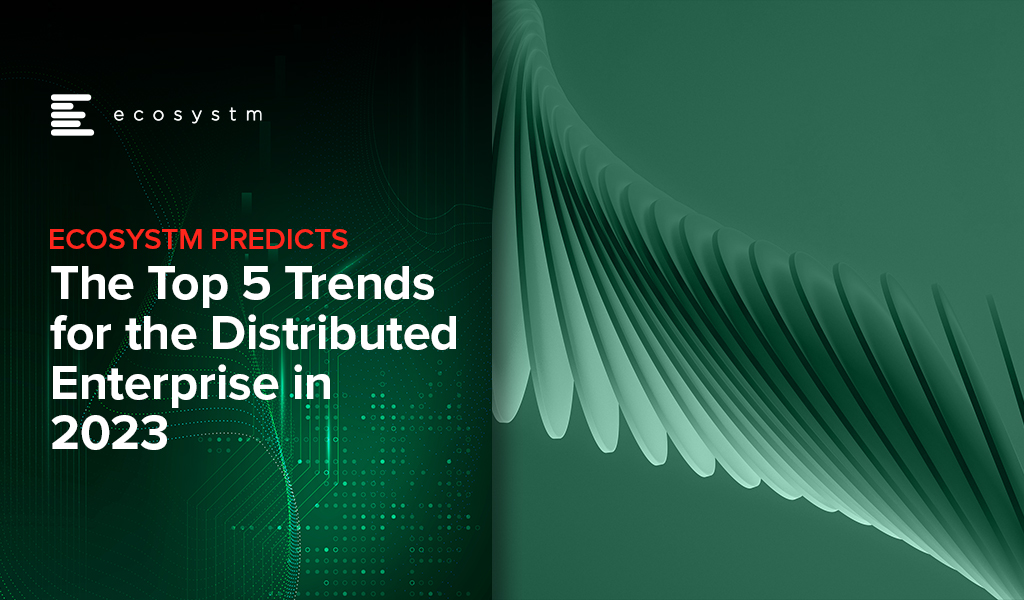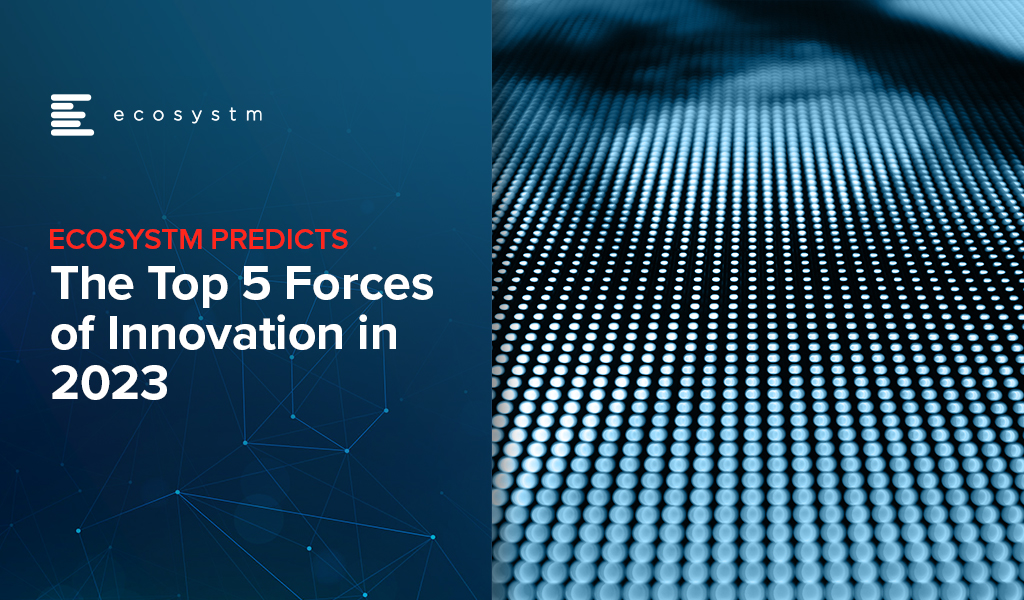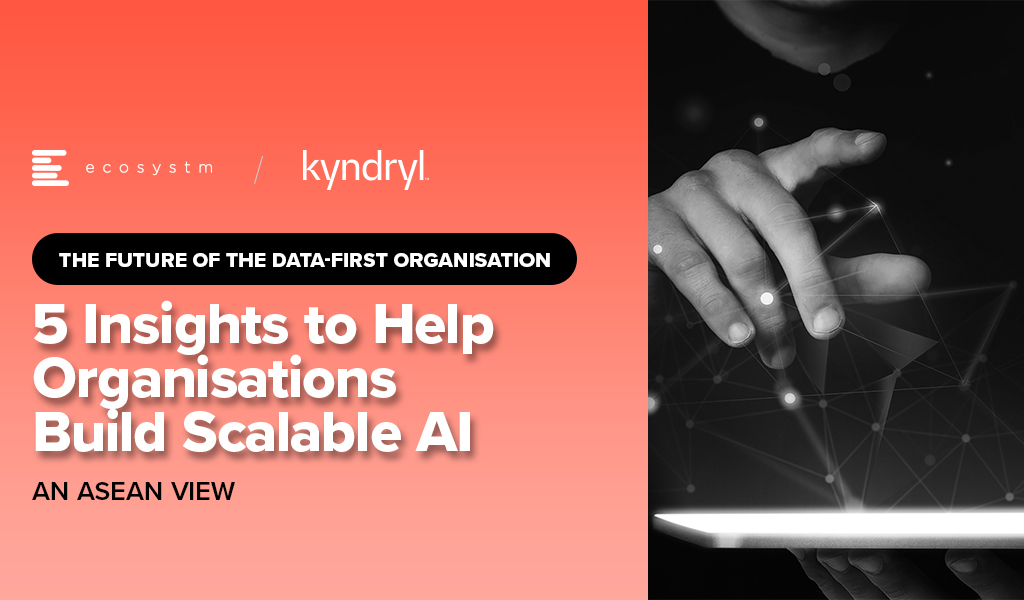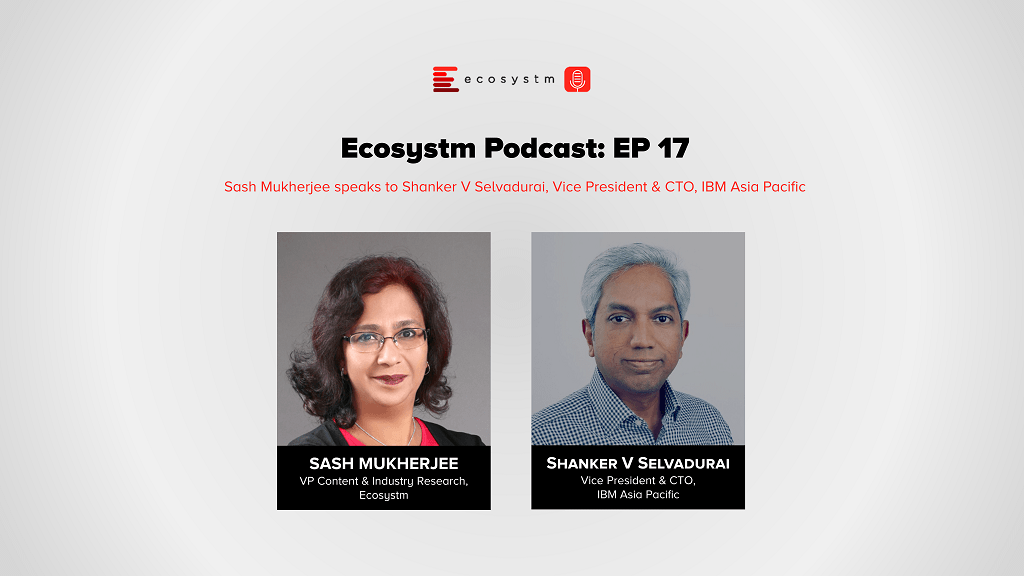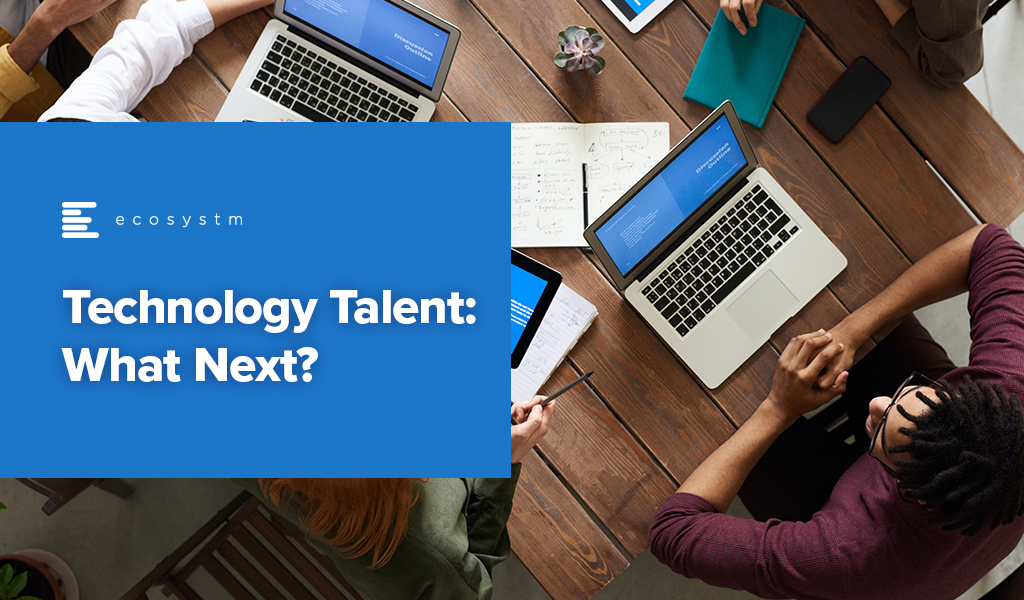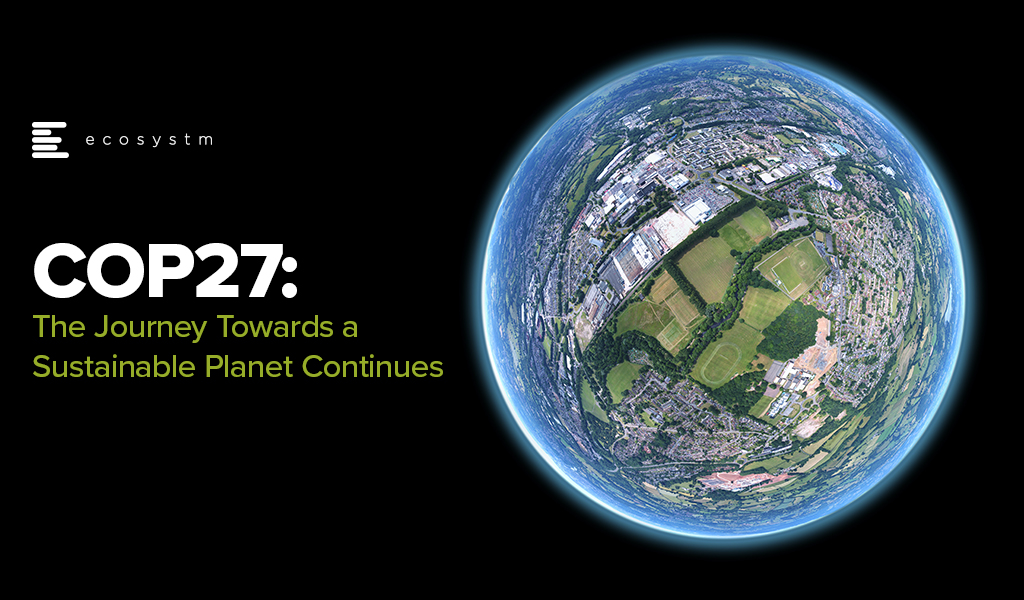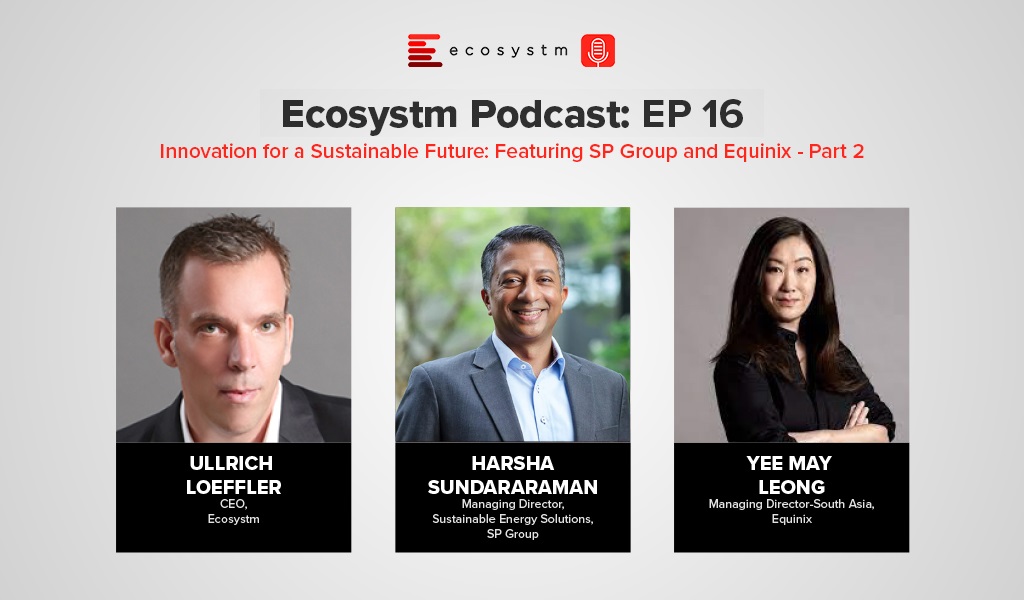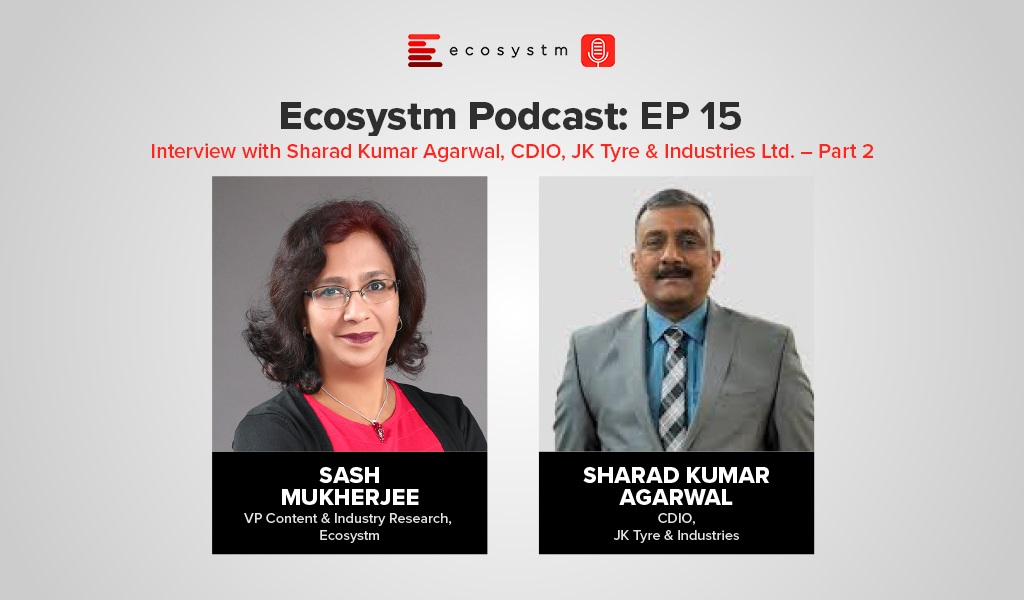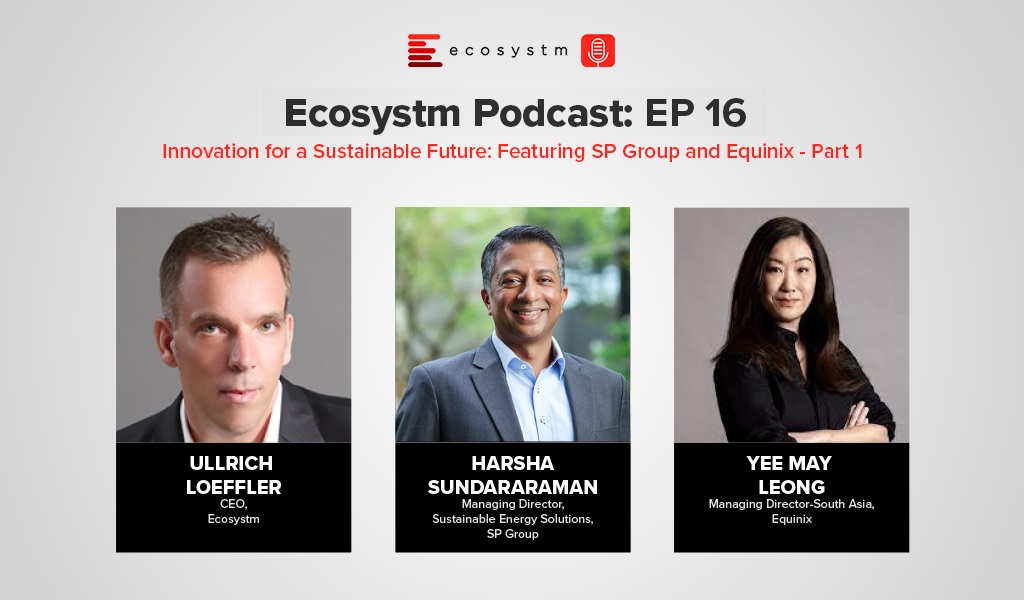In 2023, organisations will continue to reinvent themselves to remain relevant to their customers, engage their employees and be efficient and profitable.
As per Ecosystm’s Digital Enterprise Study 2022, organisations will increase spend on digital workplace technologies, enterprise software upgrades, mobile applications, infrastructure and data centres, and hybrid cloud management.
Here are the top 5 trends for the Distributed Enterprise in 2023 according to Ecosystm analysts, Alea Fairchild, Darian Bird, Peter Carr, and Tim Sheedy.
- Deskless Workers Will Become Modern Professionals
- Need for Cost Efficiency Will Stimulate the Use of Waste Metrics in Public Cloud
- The Climate & Energy Crisis Will Change the Cloud Equation
- Industry Cloud Will Further Accelerate Business Innovation
- The SASE Piece Will Fall in Place
Read on for more details.
Download Ecosystm Predicts: The Top 5 Trends for the Distributed Enterprise in 2023

2022 was a year of consolidation – of business strategy, people policy, tech infrastructure, and applications. In 2023, despite the economic uncertainties, organisations will push forward in their tech investments on selected areas, with innovation as their primary focus. Successful businesses today realise that they are operating in a “disrupt or be disrupted” environment.
Here are the top 5 forces of innovation in 2023 according to Ecosystm analysts, Alan Hesketh, Alea Fairchild, Peter Carr, and Tim Sheedy and Ecosystm CEO Ullrich Loeffler.
- The Gen Z Tsunami will force organisations to truly embrace the 21st century.
- “Big Ticket Innovation” will get back on the agenda.
- Over the Edge: The Metaverse ecosystem will take shape.
- Green Computing will drive tech investments.
- Organisations will harness existing tech to innovate.
Read on for more details.
Download Ecosystm Predicts: The Top 5 Forces of Innovation in 2023 as a PDF

Data & AI initiatives are firmly at the core of any organisation’s tech-led transformation efforts. Businesses today realise the value of real-time data insights to deliver the agility that is required to succeed in today’s competitive, and often volatile, market.
But organisations continue to struggle with their data & AI initiatives for a variety of reasons. Organisations in ASEAN report some common challenges in implementing successful data & AI initiatives.
Here are 5 insights to build scalable AI.
- Data Access a Key Stumbling Block. Many organisations find that they no longer need to rely on centralised data repositories.
- Organisations Need Data Creativity. A true data-first organisation derives value from their data & AI investments across the entire organisation, cross-leveraging data.
- Governance Not Built into Organisational Psyche. A data-first organisation needs all employees to have a data-driven mindset. This can only be driven by clear guidelines that are laid out early on and adhered to by data generators, managers, and consumers.
- Lack of End-to-End Data Lifecycle Management. It is critical to have observability, intelligence, and automation built into the entire data lifecycle.
- Democratisation of Data & AI Should Be the Goal. The true value of data & AI solutions will be fully realised when the people who benefit from the solutions are the ones managing the solutions and running the queries that will help them deliver better value to the business.
Read below to find out more.
Download 5 Insights to Help Organisations Build Scalable AI – An ASEAN View as a PDF

In this episode Sash Mukherjee, VP Content & Industry Research, Ecosystm caught up with Shanker V Selvadurai, Vice President & CTO, IBM Asia Pacific to discuss what technology teams can do to mitigate the challenges that digital enterprises face, and bring value to the business.
Hear Shanker’s views on:
- What technology teams need to focus on to align with business objectives
- Strategies to manage data better
- The benefits of a Zero Trust model
Podcast: Play in new window | Download (5.1MB)
Subscribe Spotify | Amazon Music | JioSaavn | Podchaser | RSS | More
November has seen uncertainties in the technology market with news of layoffs and hiring freezes from big names in the industry – Meta, Amazon, Salesforce, and Apple to name a few. These have impacted thousands of people globally, leaving tech talent with one common question, ‘What next?’
While the current situation and economic trends may seem grim, it is not all bad news for tech workers. It is true that people strategies in the sector may be impacted, but there are still plenty of opportunities for tech experts in the industry.
Here is what Ecosystm Analysts say about what’s next for technology workers.

Today, we are seeing two quite conflicting signals in the market: Tech vendors are laying off staff; and IT teams in businesses are struggling to hire the people they need.
At Ecosystm, we still expect a healthy growth in tech spend in 2023 and 2024 regardless of economic conditions. Businesses will be increasing their spend on security and data governance to limit their exposure to cyber-attacks; they will spend on automation to help teams grow productivity with current or lower headcount; they will continue their cloud investments to simplify their technology architectures, increase resilience, and to drive business agility. Security, cloud, data management and analytics, automation, and digital developers will all continue to see employment opportunities.
If this is the case, then why are tech vendors laying off headcount?
The slowdown in the American economy is a big reason. Tech providers that are laying of staff are heavily exposed to the American market.
- Salesforce – 68% Americas
- Facebook – 44% North America
- Genesys – around 60% in North America
Much of the messaging that these providers are giving is it is not that business is performing poorly – it is that growth is slowing down from the fast pace that many were witnessing when digital strategies accelerated.
Some of these tech providers might also be using the opportunity to “trim the fat” from their business – using the opportunity to get rid of the 2-3% of staff or teams that are underperforming. Interestingly, many of the people that are being laid off are from in or around the sales organisation. In some cases, tech providers are trimming products or services from their business and associated product, marketing, and technical staff are also being laid off.
While the majority of the impact is being felt in North America, there are certainly some people being laid off in Asia Pacific too. Particularly in companies where the development is done in Asia (India, China, ASEAN, etc.), there will be some impact when products or services are discontinued.

While it is not all bad news for tech talent, there is undoubtedly some nervousness. So this is what you should think about:
Change your immediate priorities. Ecosystm research found that 40% of digital/IT talent were looking to change employers in 2023. Nearly 60% of them were also thinking of changes in terms of where they live and their career.

This may not be the right time to voluntarily change your job. Job profiles and industry requirements should guide your decision – by February 2023, a clearer image of the job market will emerge. Till then, upskill and get those certifications to stay relevant!
Be prepared for contract roles. With a huge pool of highly skilled technologists on the hunt for new opportunities, smaller technology providers and start-ups have a cause to celebrate. They have faced the challenge of getting the right talent largely because of their inability to match the remunerations offered by large tech firms.
These companies may still not be able to match the benefits offered by the large tech firms – but they provide opportunities to expand your portfolio, industry expertise, and experience in emerging technologies. This will see a change in job profiles. It is expected that more contractual roles will open up for the technology industry. You will have more opportunities to explore the option of working on short-term assignments and consulting projects – sometimes on multiple projects and with multiple clients at the same time.
Think about switching sides. The fact remains that digital and technology upgrades continue to be organisational priorities, across all industries. As organisations continue on their digital journeys, they have an immense potential to address their skills gap now with the availability of highly skilled talent. In a recently conducted Ecosystm roundtable, CIOs reported that new graduates have been demanding salaries as high as USD 200,000 per annum! Even banks and consultancies – typically the top paying businesses – have been finding it hard to afford these skills! These industries may well benefit from the layoffs.
If you look at technology job listings, we see no signs of the demand abating!

The recently concluded 27th Conference of the Parties to the United Nations Framework Convention on Climate Change (COP27) brought together Heads of State, ministers and negotiators, climate activists, mayors, civil society representatives, and CEOs in Egypt’s city of Sharm el-Sheikh to discuss climate action. The conference aimed to build on the outcomes of COP26 to effectively tackle the current climate emergency and set goals for the future.
Where COP26 Left Off
Before we look at COP27, here’s a look at what COP26 committed to and what the progress has been. The conference had ended on an ambitious note with a slew of climate plans and pledges undertaken by countries for the upcoming decades. In addition, all countries agreed to come back to COP27 with stronger, more focused climate plans of actions. The event saw 141 countries promise to halt and reverse forest loss and land degradation by 2030. As part of the Paris Agreement, 151 countries updated their nationally determined contributions (NDCs). Over 100 countries also signed the Global Methane Pledge to cut their collective methane emissions by 30% by 2030. The Glasgow Climate Pact was released at the end of COP26, which highlighted the need to phase out coal. During the conference, the Glasgow Financial Alliance for Net Zero (GFANZ) committed over USD 130 trillion in private capital towards achieving net-zero goals.
However, climate activists pointed out that there were some missed points:
- Ocean crisis was not addressed
- The progress on Climate Change Policy was hindered due to a lack of gender equality
- There was a lack of agreement on loss and damage finance from mature economies to emerging economies facing wide-scale destruction of life and property due to extreme weather events
- While many countries did set long-term goals, there was a lack of short-term targets for 2030
COP27 Continues to Pave the Path Ahead
Despite a lot of commitments being made during the previous conferences, not a lot of those targets were met. This year, one of the crucial focus points was the implementation of existing targets instead of setting new goals. The top themes at COP27 were climate finance, adaptation, loss and damage, and increased ambition.
Loss and Damage. In a first, ‘loss and damage’ was made a part of the provisional agenda of discussion on matters relating to finance. Smaller nations called for a treaty against fossil fuels, and a global tax on corporations’ profits from fossil fuels. Countries, including Austria, Germany, Belgium, and New Zealand, promised funds to emerging economies to help them with the loss and damage caused by activities undertaken by mature economies.
Adaptation. COP27 President Sameh Shoukry launched the Sharm El-Sheikh Adaptation Agenda, which outlines 30 adaptation outcomes that, if completed by 2030, will positively impact about four billion people in lesser developed areas in the world. UN secretary-general António Guterres also addressed the conference and suggested a universal early warning system for five years. In addition, the UN Human Rights and Right Here, Right Now launched the Human Rights Climate Commitments (HRCC) which is an initiative for rights-based climate action.
Accountability. Apart from this, discussions to highlight how greenwashing and weak net zero pledges are threatening to undermine global efforts were held. Global securities regulators called for a closer review of carbon trading to prevent greenwashing by companies to offset their emissions. This has led to a need for transparency and holding organisations accountable for net zero goals as well as establishing clear regulations and standards.
Other key areas of discussions focused on integrating renewable energy and bringing better energy solutions that cater to diverse countries and requirements and the Ukraine war and its impact on the Middle East and Africa. The COP27 agenda this year focused on various topics around finance, resilience, industry, land use, water, energy, and transport to create a sustainable planet.
Future Expectations
With several successful conferences behind us, the world wants more focused implementations and lesser conversations. Here are some of the future expectations:
- Emerging economies want to see ‘loss and damage’ a part of long-term climate agendas.
- As extreme weather conditions continue, concrete short-term plans to deal with the water and soil crisis are just as important as long-term ones.
- More collaborations are required between governments, corporates, investors, and society for new solutions and innovations.
- Corporates need to commit more to funding sustainable projects, invest in sustainable technology, and actually, reduce their carbon footprint.
- With today’s unpredictable times, policies need to be framed such that they can easily be amended and adapted to ensure that there is no pause or stop when implementing them.
The need of the hour is to address implementation blocks, facilitate conversations for funding and partnerships, and simple policies that are realistic – especially if 2030 and 2050 targets are to be met.

Listen to the second part of Innovation for a Sustainable Future, where Ullrich Loeffler, CEO, Ecosystm speaks with Harsha Sundararaman, Managing Director, Sustainable Energy Solutions, SP Group and Yee May Leong, Managing Director-South Asia, Equinix on cost and energy savings in green buildings, collaborative sustainable efforts, how a good digital infrastructure impacts carbon neutral goals, and using data and AI for sustainable innovations.
Podcast: Play in new window | Download (4.4MB)
Subscribe Spotify | Amazon Music | JioSaavn | Podchaser | RSS | More
Listen to part 2 of the conversation between Sash Mukherjee, VP Content & Industry Research, Ecosystm and Sharad Kumar Agarwal, CDIO, JKTyre & Industries Ltd as they discuss the challenges that IT leaders face in hiring and retaining talent, and the importance of partner ecosystem landscape for tech implementation.
Podcast: Play in new window | Download (5.5MB)
Subscribe Spotify | Amazon Music | JioSaavn | Podchaser | RSS | More
Sustainability is top of mind for organisations and governments across the world – and Ecosystm research shows that in Singapore, 70% of enterprises have sustainability as a strategic initiative on their business agenda. It is time to talk to organisations that are leading in this space.
In this EcosystmTV episode Ullrich Loeffler, CEO, Ecosystm talks to Harsha Sundararaman, Managing Director, Sustainable Energy Solutions, SP Group and Yee May Leong, Managing Director-South Asia, Equinix about what their organisations are doing to create sustainable development measures, and the different approaches to achieving net-zero goals.
Podcast: Play in new window | Download (5.3MB)
Subscribe Spotify | Amazon Music | JioSaavn | Podchaser | RSS | More


